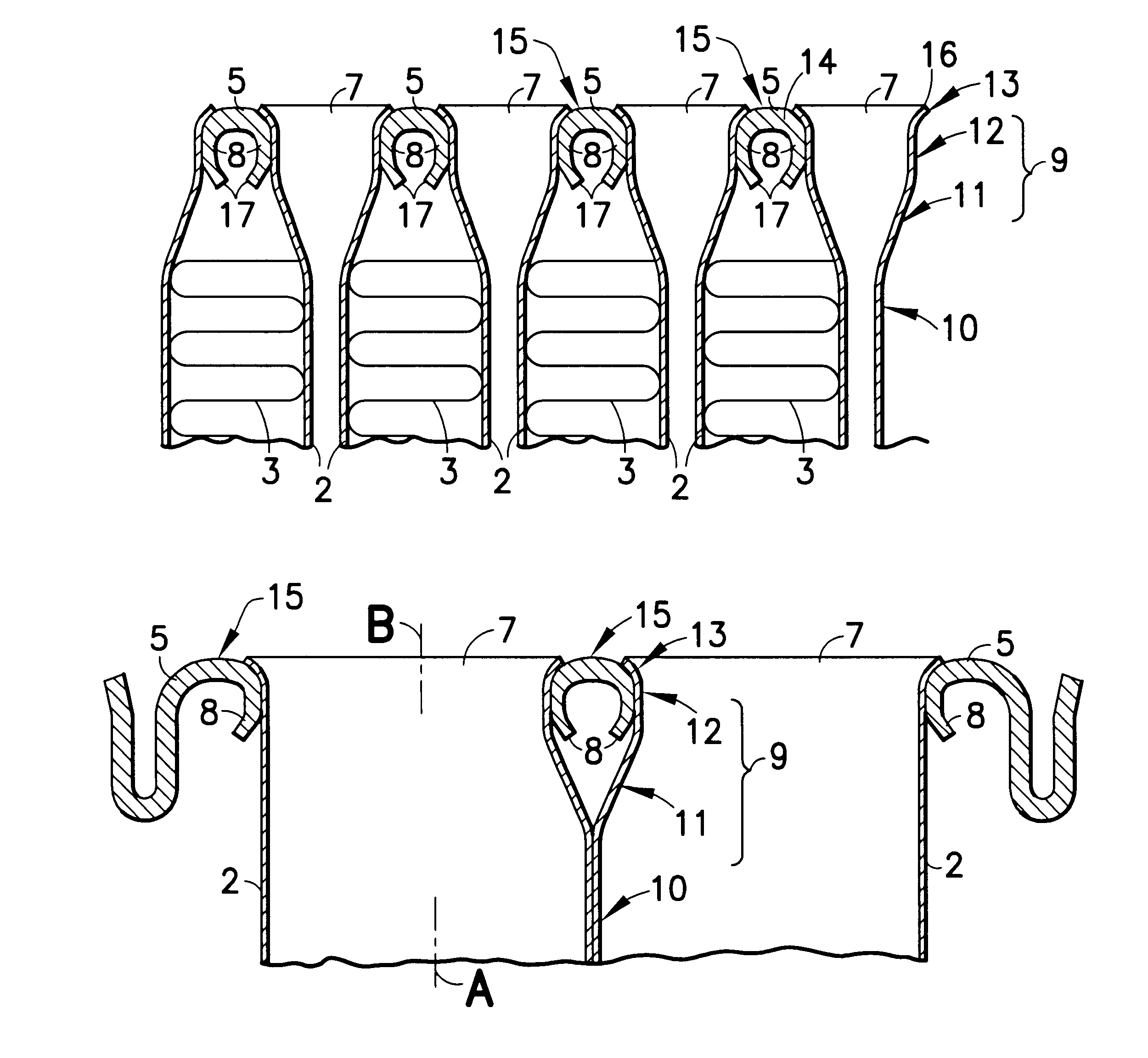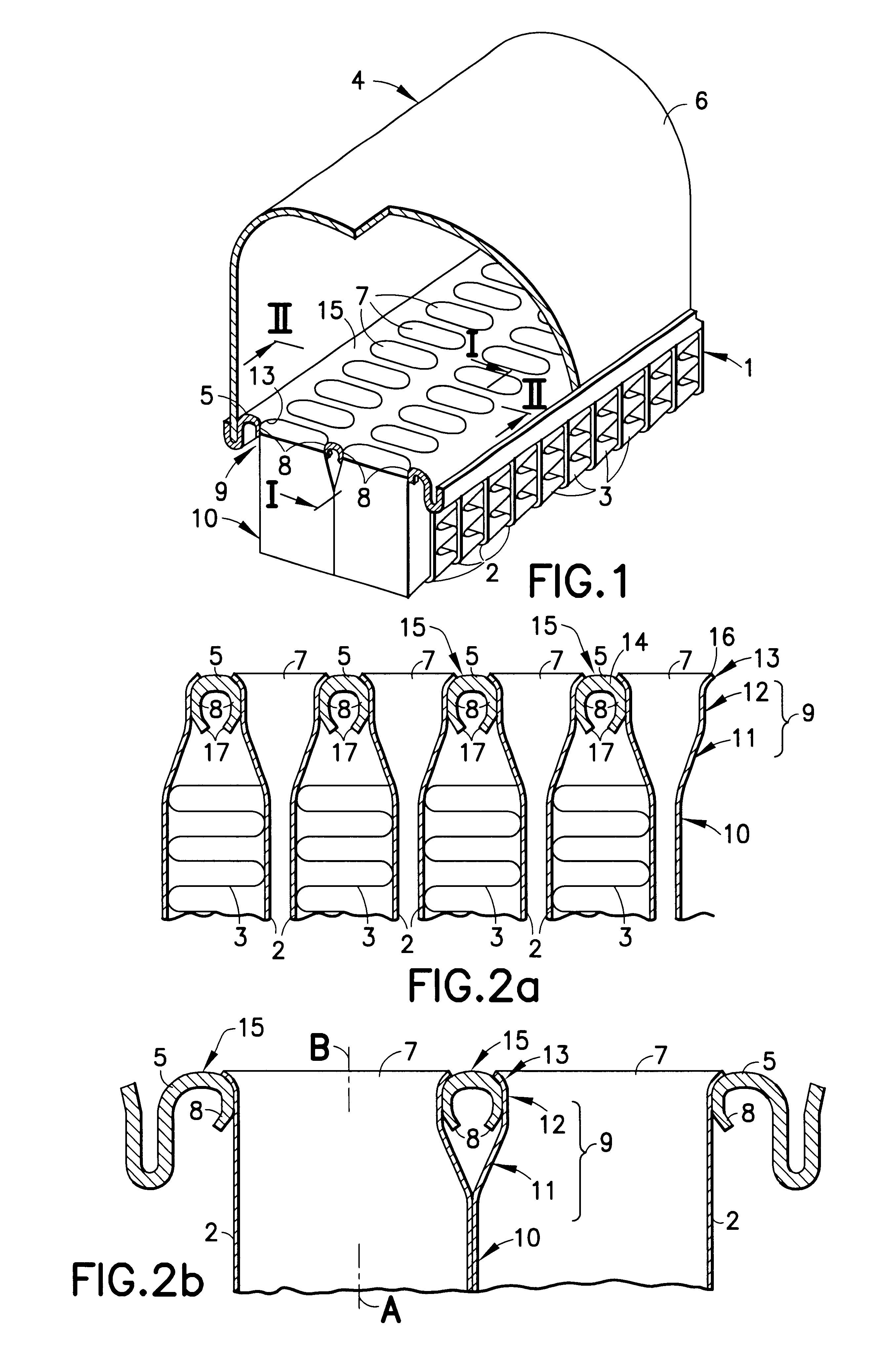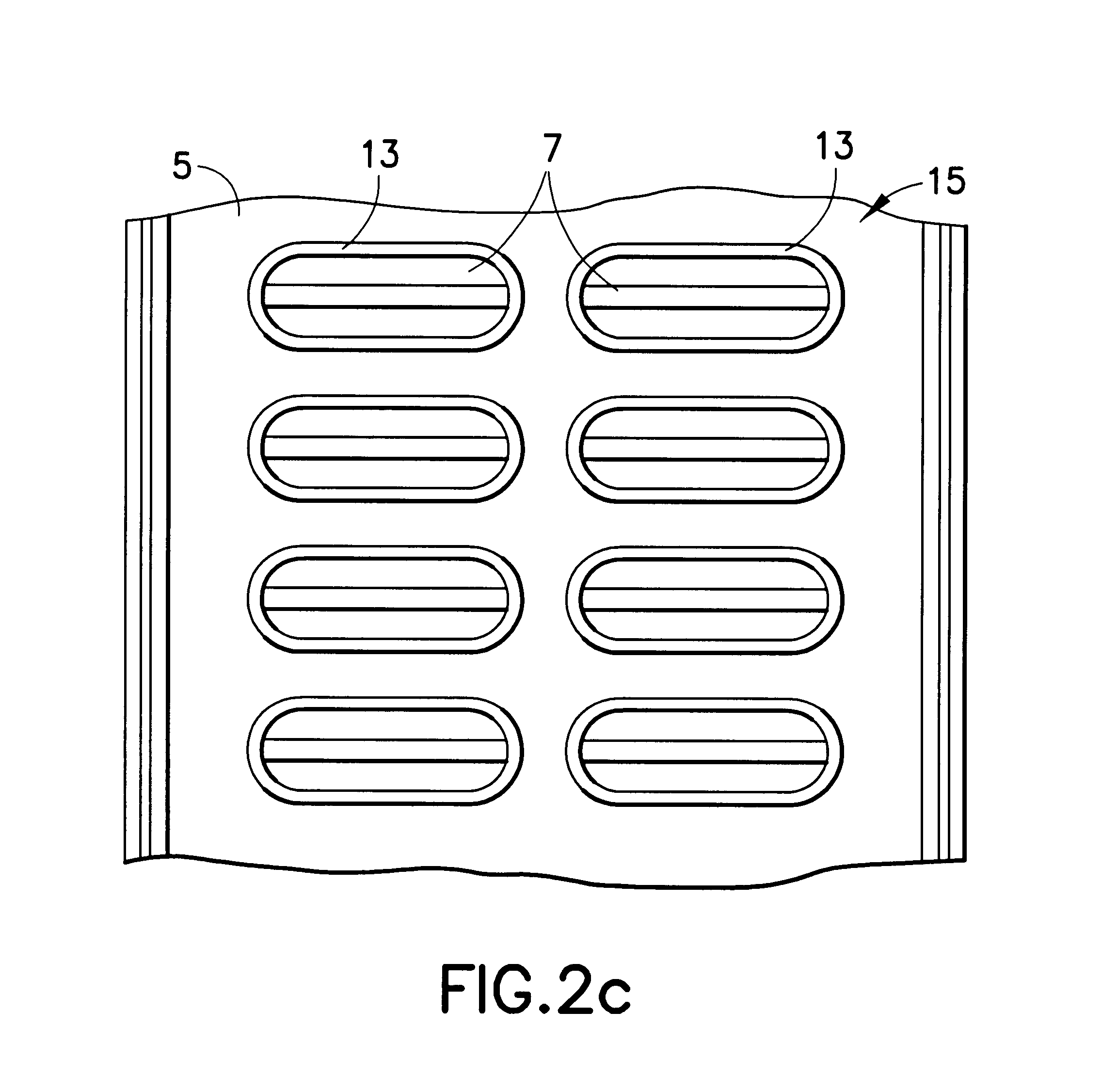Heat exchanger and method of producing the same
- Summary
- Abstract
- Description
- Claims
- Application Information
AI Technical Summary
Benefits of technology
Problems solved by technology
Method used
Image
Examples
Embodiment Construction
The heat exchanger according to FIG. 1 has a heat-exchanger assembly 1 with two essentially parallel rows of flat liquid-conveying tubes 2 made of aluminum. The heat-exchanger assembly 1 also has surface-enlarging means 3, so-called ranks, which extend over the width of the heat-exchanger assembly 1 and which are arranged between each pair of tubes 2 in the respective row. The tubes 2 are arranged flat side to flat side in each row. An inlet tank 4, which comprises a connection plate 5 made of aluminum and a cover 6 connected to the plate 5, is connected to a first end of the heat-exchanger assembly 1. A corresponding outlet tank (not shown) is connected to the second, opposite end of the heat-exchanger assembly 1. The fastening of the cover 6 to the plate 5 is not significant for the invention and is not described any further.
The connection plate 5 is provided with parallel first and second rows of oblong holes 7 which, in the transverse and longitudinal directions, are situated at...
PUM
| Property | Measurement | Unit |
|---|---|---|
| Shape | aaaaa | aaaaa |
| Width | aaaaa | aaaaa |
| Area | aaaaa | aaaaa |
Abstract
Description
Claims
Application Information
 Login to View More
Login to View More - R&D
- Intellectual Property
- Life Sciences
- Materials
- Tech Scout
- Unparalleled Data Quality
- Higher Quality Content
- 60% Fewer Hallucinations
Browse by: Latest US Patents, China's latest patents, Technical Efficacy Thesaurus, Application Domain, Technology Topic, Popular Technical Reports.
© 2025 PatSnap. All rights reserved.Legal|Privacy policy|Modern Slavery Act Transparency Statement|Sitemap|About US| Contact US: help@patsnap.com



